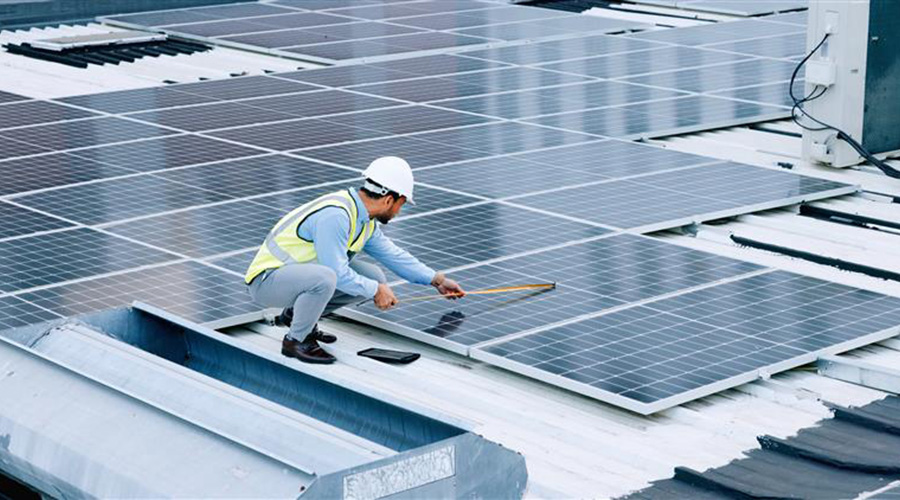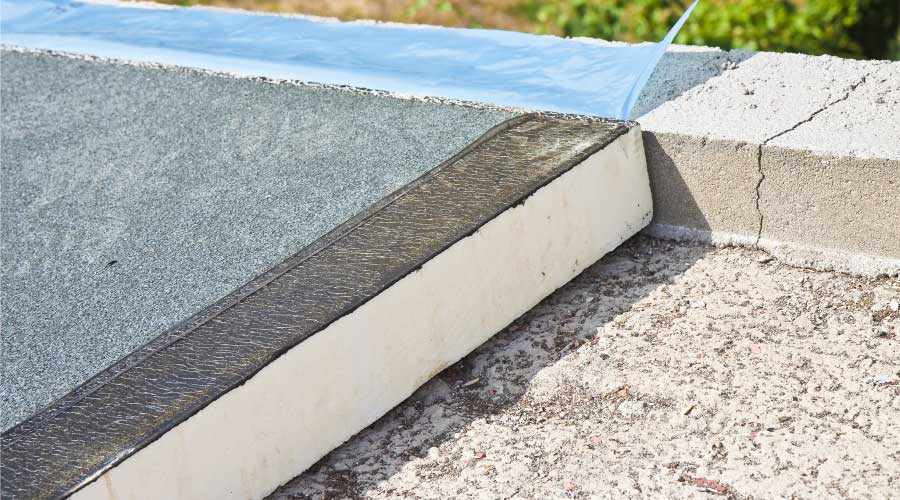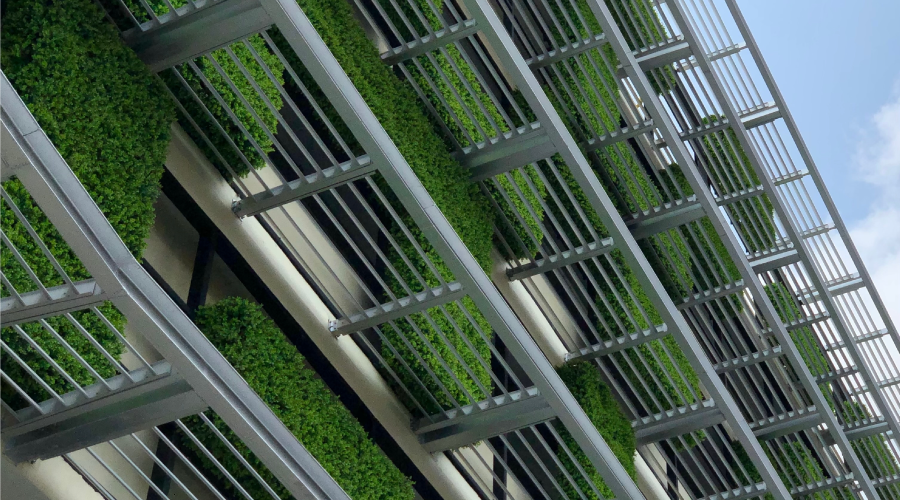Insulation Issues: The Search for Savings
By understanding benefits of properly specified and installed insulation, as well as its proper inspection and repair, managers can ensure it performs effectively.
By Kieran Tracy, Contributing Writer
In the search for greater energy efficiency in institutional and commercial facilities, maintenance and engineering managers need to look closely at every building system and component. Among the overlooked building materials that offer energy efficiency and savings is insulation, primarily in roofing systems and on piping. By understanding the potential benefits of properly specified and installed insulation, as well as proper inspection and repair, managers can ensure it performs effectively and keeps HVAC costs down.
Pipe insulation
While the energy savings from implementing best maintenance practices for pipe and fitting insulation are not as substantial as those related to roof insulation, managers still can save money on heating and cooling bills by maintaining approximately 1-2 inches insulation so HVAC systems do not have to work as hard to maintain temperature.
Inspection and maintenance of pipe insulation also can prevent the formation of condensation and excess moisture, which eventually can lead to indoor air quality (IAQ) problems. Certain types of insulation can be installed directly over flanges, while others leave them exposed and can result in unwanted condensation. For valve assemblies, there are options to feature a removable blanket and cover to provide easier access for maintenance.
Routine walkthroughs of mechanical spaces, pipe chases and other areas of exposed piping ductwork are step one to identifying areas of missing insulation. Whether insulation was never installed, has deteriorated or has fallen off over the years, replacing this can have short-term paybacks.
Insulating one section of uninsulated 3-inch steam pipe operating year-round could save $100 annually per foot of insulation, which would most likely produce a return on investment of 8-12 months, depending on labor costs, according to an insulation loss calculator from Hartford Steam Boiler.
Wet insulation on pipes and ductwork loses up to 40 percent of its R-value. Because these components are within a breathable environment, they also can impact IAQ. Wet fiberglass insulation, although mold resistant, still can harbor mold spores, leading to air quality issues.
Technicians should routinely monitor pipe insulation for areas of discoloration or dripping and whether it is squishy when touched. Saturated pipe insulation indicates a leak or a condensation issue, both of which occur on pipes and potentially corrode piping and accessories. Insulated piping accessories, such as bleeder vents, should be checked routinely for moisture.
One client recently experienced a chilled-water system failure when the stem on a bleeder valve corroded and fell off, resulting in the flooding of the mechanical room. Due to the awkward location of the piping and the insulation covering the component, technicians did not realize that the pieces had been corroding for some time. As a result of the problem, they examined additional areas to find multiple deficiencies with wet insulation and substantial corrosion behind it.
Roofing insulation
Insulation in general is the most expensive material in a roofing project, so having higher-quality roofing materials installed will protect investment and can contribute to energy efficiency.
Managers need to pay attention to the thickness of membrane-type roofs to prevent premature failure and punctures. Most roof design professionals recommend installing a four-way slope design to maximize drainage, but due to high costs, roof insulation is typically one of the first measures to be considered during value engineering.
Managers need to be careful when reviewing and accepting value engineering decisions related to roofing systems because such decisions most likely will result in premature issues down the road. During new construction or renovation projects, managers should make sure to specify the minimum R-value and validate it during the submittal or installation phases to be confident they have received the specified materials.
Managers also need to ensure sump drains are properly engineered to give the water enough momentum to get to the drain. The size of the sump is impacted by the level of insulation. For example, 2 inches of insulation should have a 4-foot by 4-foot minimum sump, and 3 inches of insulation should have an 8-foot by 8-foot minimum sump.
Insulation loses up to 40 percent of its R-value when wet, decreasing its overall efficiency. Moisture in the roof eventually leaves the insulation and damages interiors in some capacity, requiring costlier maintenance and potential IAQ concerns.
Polyisocyanurate is one of the most popular and energy-efficient types of roofing insulation and is used in most commercial installations. Due to its high compatibility with roofing membranes and its class-leading R-value at 6.5 per inch, it makes an excellent choice of insulation for new and renovation projects.
A facility’s minimum required insulation R-value is typically dictated by the building code based on the local climate, but the thicker the insulation, the higher the R-value and the more managers ca minimize heat gains in the summer and retain heating in winter, both of which can lower energy bills substantially.
But with increased materials and R-value comes increased cost. 2 inches of polyisocyanurate board (R-13) per square foot is approximately 50 percent costlier than a 1-inch board (R-6.5) of the same size, and a 3-inch board (R-20) per square foot is approximately 25 percent costlier than the 2-inch equivalent. It becomes clear how more insulation can cost more. Due to its modified shapes, tapered roof insulation is even costlier and as such should be protected with high-quality roofing materials to protect the investment.
Testing and inspection
When roof insulation gets wet, it acts as a sponge throughout the saturated sections. This problem can make identifying the source of an interior leak based solely on its location difficult, since the actual roof leak might not release the moisture in the area directly above the interior leak.
While roof leaks might not be readily visible to inspectors, an area with water intrusion and wet insulation typically feels softer than the surrounding dry roof insulation. These areas need to be identified and addressed before they turn into larger issues.
Tools for detecting wet insulation are available for purchase or in conjunction with the roofing provider. Examples include roof scanners that technicians can use to identify wet spots and their general severity to tentatively map out the area of water intrusion. Thermal imaging cameras can also identify wet insulation with the right outside air conditions.
Technicians should take thermal images of roofs just after sunset, when dry insulation cools down more quickly. The wet insulation serves as a thermal mass and maintains the sun's temperature for longer and will show up in the thermal images.
Unfortunately, this process can be difficult at close range. We recently employed a drone-mounted thermal imaging camera to provide a better picture of the roof and identify moisture from 100 feet above the finished roof. The drone produced normal images with the thermal imaging overlay, and the drone provider used algorithms to identify potential conditions to be investigated, such as low spots with discoloration, debris, damaged tiles and abandoned roofing materials.
The benefits of using a drone for this scenario go beyond using technology to perform roof inspections. Drone use also can reduce the amount of foot traffic on roofs, resulting in increased safety and less deterioration over time.
An existing roof system with insulation that is less than 20 percent wet can be a good candidate for restoration so long as there is an existing slope and design. Catching leaks as early as possible can save the organization money compared to a full roof replacement.
Managers also need to understand the value of specifying and purchasing higher-quality silicone sealants, as well as various coatings and sealing and repair tactics based on the condition of the roof and the existing roofing design and materials. Corrective maintenance measures for roofing systems typically only buy a few years, so they cannot depend solely on repair tactics and need to prioritize the failing roofs for a more permanent fix.
Kieran Tracy is an engineering manager with FST Technical, which provides testing, inspection, certification and engineering services to facilities.
Related Topics:












